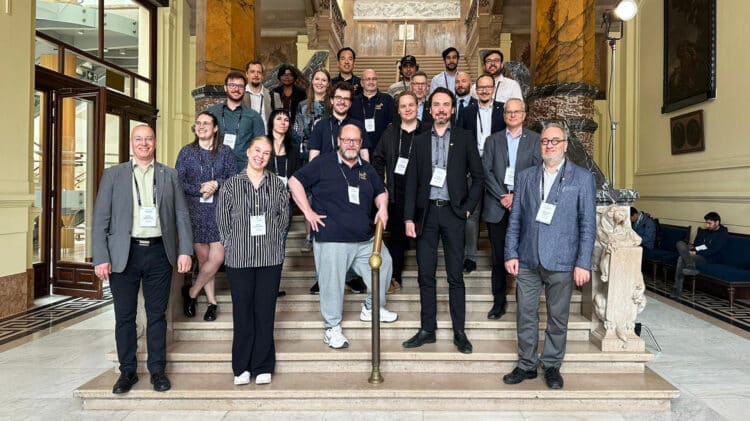
EuCNC & 6G Summit 2024 drives digital technologies
The highly anticipated EuCNC & 6G Summit kicked off Monday with insightful workshops and tutorials. This premier event, dedicated to exploring the future of wireless communications and the groundbreaking 6G technology, is a hub for knowledge-sharing and innovation.
Johann Marquez-Barja, the local organiser and TPC Co-Chair from Imec, the driving force behind this year’s conference arrangements, warmly welcomed the over 900 participants to Antwerp. In his opening remarks, he reminded the attendees that the EuCNC & 6G Summit celebrates “innovation, research, and progress – pushing our society forward, together.”
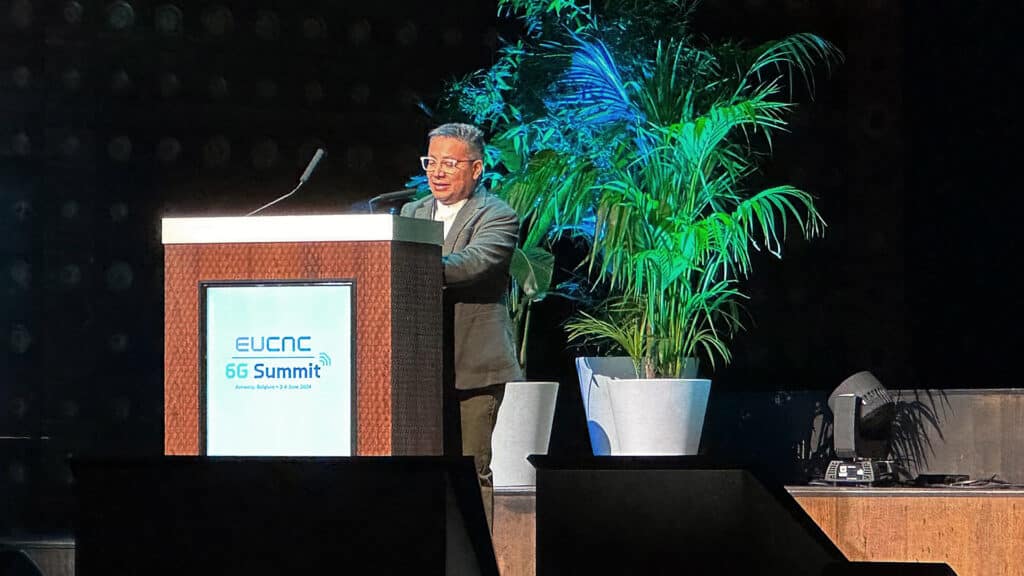
As General Co-Chair, Pearse O’Donohue, Director of Future Networks at the European Commission, delivered a thought-provoking speech that resonated deeply with the wireless technology community. EU’s strong focus on fostering technological sovereignty and competitiveness requires critical importance on developing cutting-edge solutions to position European players as global leaders. ”We’re in a transition year,” O’Donohue started, “with upcoming elections that will shape a strategic agenda increasingly focused on digital technologies as drivers of the European economy.”
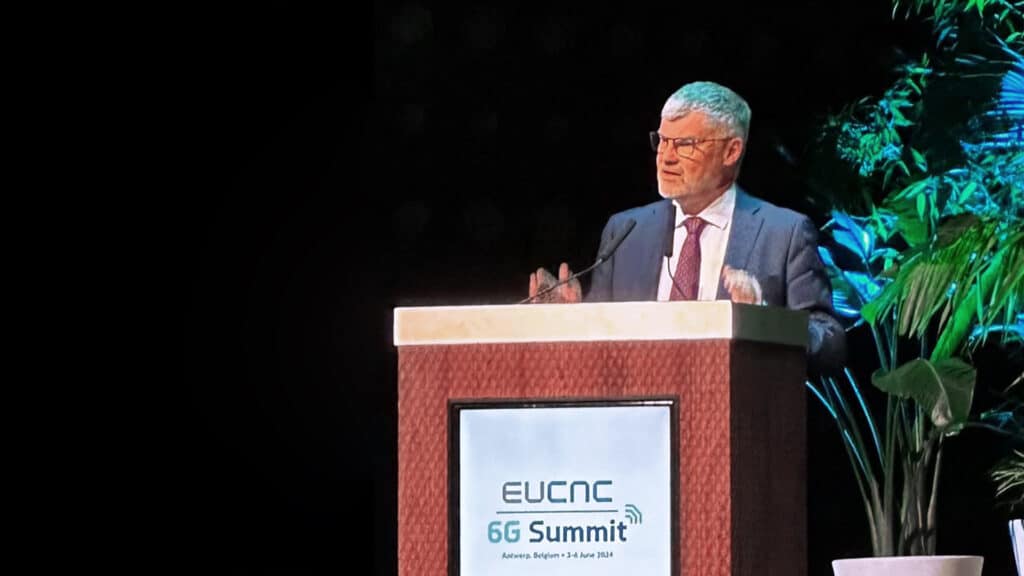
Several strategic challenges require technological solutions: sustainability, cybersecurity, technological sovereignty, competitiveness, and robust digital infrastructure development. We need to address energy efficiency and the environmental impact of digital technologies. Enhancing network and system security is crucial to protect against threats. To ensure that Europe remains competitive in the global market, we must foster innovation and reduce dependency on high-risk suppliers. Secure and efficient digital infrastructure that supports high speeds, reliability, and low latency is essential for transport, smart cities, and energy grids.
“The technologies you are working on can play a huge role in resolving those challenges.”We need to look at the output from the Data Cloud Alliance and the IPCEI on cloud infrastructure and services. And, of course, how do we better use the existing funding available at the European and national level?” O’Donohue said, stressing the critical role of funding for initiatives that drive all these necessary technological advancements.
O’Donohue inspired his audience to push the boundaries of innovation and cement Europe’s position at the forefront of wireless advancements. “Not only do I want you to have a great conference, but I also want you to come back from EUCNC inspired by how you and your organisation can contribute to this vision.”
Progress and future of 6G research in Europe
Ms Erzsebet Vittori, Executive Director of the Smart Networks and Services Joint Undertaking (SNSJU), delivered a compelling address on the progress and future of 6G research in Europe. She highlighted the collaborative efforts between the European Commission, the 6G Industry Association, member states, and international partners like the United States, Japan, and South Korea. She reminded the audience the EU’s leadership in 6G development is supported by significant funding and strategic initiatives, with 1.8 billion euros invested in research and development.
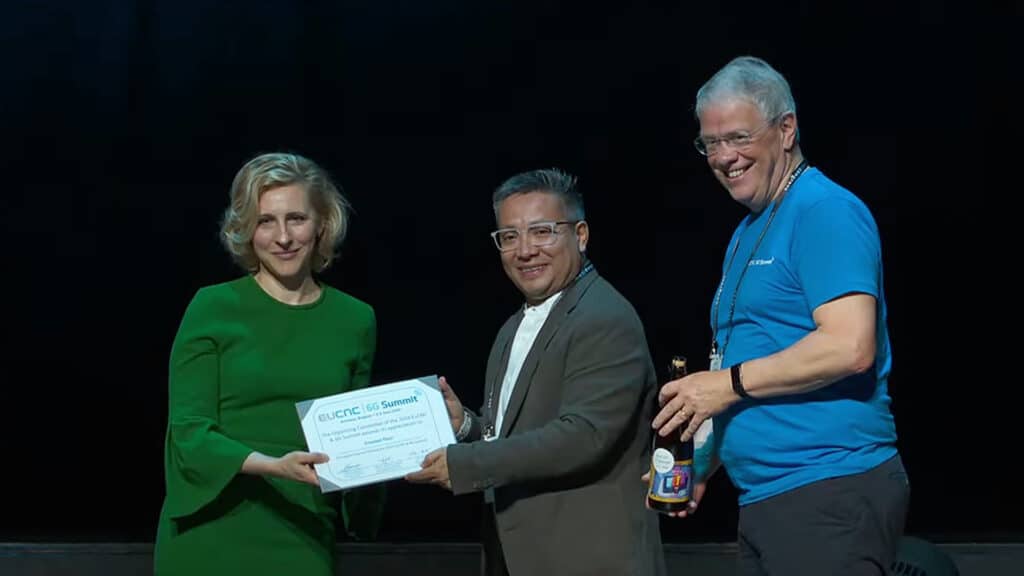
“Our clear objective is to support the EU’s Green Deal, as well as the UN sustainability goals,” Vittori said, stressing the SNSJU’s commitment to sustainability. The SNSJU’s phased approach to 6G development, which builds on 5G advancements and moves towards full 6G systems, was a key topic of discussion. Vittori highlighted the importance of European leadership in standardisation and mentioned ongoing large-scale trials with various industry verticals aimed at creating robust ecosystems for future business applications. She also discussed ongoing projects focused on enhancing energy efficiency in radio access networks and future 6G systems and the critical importance of cybersecurity, with numerous initiatives dedicated to ensuring reliable 6G networks.
Moving forward, SNSJU’s focus will remain on sustainability, security, and maintaining Europe’s competitive edge in the global telecom landscape. Further announcements and project evaluations are expected later this year.
The Great Spectrum debate
The highly anticipated “Great 6G Spectrum Debate” took place on Tuesday, 4 June 2024, in Elisabeth Hall, organised by Director of Sustainability and Regulation Marja Matinmikko-Blue from 6G Flagship, University of Oulu. The panel brought together stakeholders to discuss the future of 6G spectrum management, addressing critical questions about sustainability, spectrum sharing, and regulatory challenges. The debate was one in a series of timely conversations on how spectrum management should evolve to meet the demands of next-generation wireless technologies.
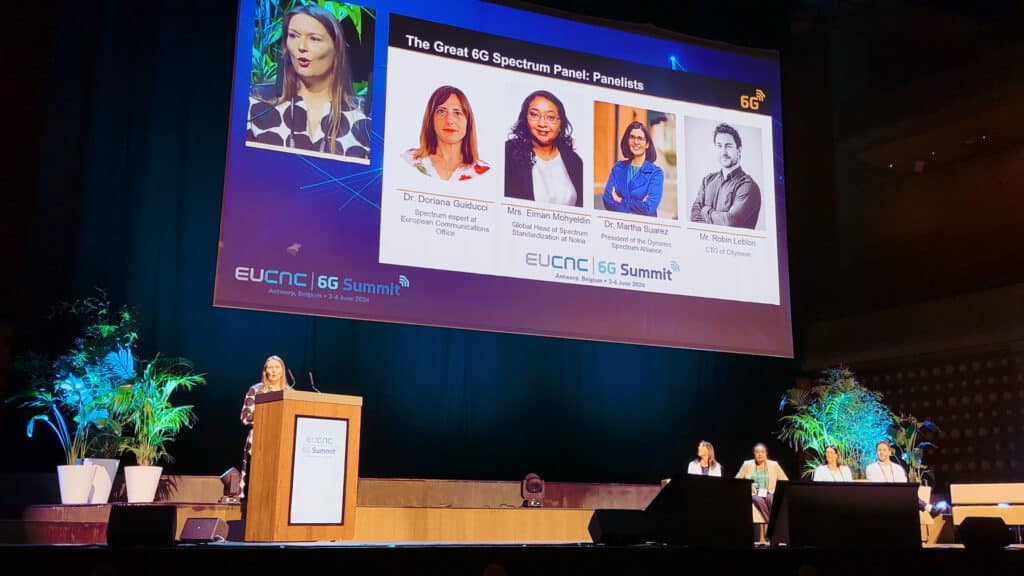
In her opening, Matinmikko-Blue emphasised the significance of spectrum as a scarce but renewable resource essential for wireless communications. The regulatory decisions will impact market landscapes for years to come. Matinmikko-Blue stressed the necessity for a more dynamic and flexible approach to spectrum access, which could lead to long-term compromises between conflicting stakeholder claims. “Spectrum management in the 6G era needs to integrate these approaches from the beginning to avoid restrictions later,” she noted.
The panel featured a range of expert opinions, including Dr Doriana Guiducci from the European Communication Office, Eiman Mohyeldin of Nokia, Dr Martha Suarez from the Dynamic Spectrum Alliance, and Robin Leblon from Citymesh. Each brought unique insights into the debate, reflecting their varied experiences and roles within the industry.
Guiducci discussed the complexity of spectrum regulation, especially given the numerous stakeholders and uses. She noted that current efforts are directed towards preparing for the next World Radiocommunication Conference (WRC-27) and highlighted the ongoing studies into various frequency bands that will impact future 6G deployments. “We need to ensure that our regulatory frameworks are robust and adaptive to the technological advancements and requirements of 6G,” she said.
Mohyeldin discussed the technological requirements for 6G. She pointed out that additional spectrum is needed to meet the increasing demand for high-speed, reliable connectivity. Innovative applications and growing traffic necessitate the allocation of new spectrum bands. “For 6G, we anticipate needing spectrum between 7.25 and 15 GHz and potentially refarming existing bands to accommodate the new applications,” she stated.
Suarez highlighted the importance of dynamic spectrum management systems, advocating for flexible frameworks that can accommodate a variety of applications and technologies. She cited the successful implementation of the Spectrum Access System (SAS) in the US as a model for managing shared spectrum. “We need systems that are transparent to users but provide opportunities for broader ecosystem engagement and efficient spectrum use,” she argued.
From an operator’s perspective, Leblon stressed the need for regulatory innovation to facilitate more flexible spectrum usage. He pointed out smaller operators’ challenges in acquiring and utilising spectrum effectively and suggested that shared spectrum models could provide a viable solution. “We need to award spectrum based on merit and the ability to provide the most value to the largest number of users,” he proposed.
Bridging Gaps and Ensuring Sustainability
The panellists also explored ways to bridge the gaps between academic research, industry agendas, and regulatory frameworks. They acknowledged the need for closer collaboration and more inclusive participation in the spectrum management process. Matinmikko-Blue highlighted the need for researchers to engage more actively in regulatory discussions to ensure that technological innovations align with regulatory realities.
Sustainability emerged as a central theme, with all panellists agreeing on its importance in the 6G spectrum management context. Guiducci mentioned ongoing efforts to incorporate sustainability considerations into spectrum regulation, including energy efficiency and environmental impact. “We need to start considering sustainability from the beginning of the regulatory process,” she urged.
Mohyeldin and Suarez echoed this sentiment, emphasising the need to use existing infrastructure and spectrum resources efficiently. Leblon suggested that reducing the number of redundant networks and encouraging cooperation among operators could significantly lower the industry’s carbon footprint. “Building fewer, more efficient networks can greatly contribute to sustainability,” he concluded.
Antwerp – the host city
Taking to the stage, Conference General Co-Chair Peter Vetter, President of Bell Labs Core Research, celebrated Antwerp’s rich historical tapestry woven through the threads of various European empires and nations. Antwerp embraces a truly pan-European identity from its Roman origins to being part of Charlemagne’s empire, the Spanish Netherlands, Austrian rule, French annexation under Napoleon, and ultimately gaining independence as part of Belgium in 1830. Its multicultural heritage, reflecting the city’s seamless integration of diverse influences over centuries, perfectly aligns with the spirit of cross-border collaboration and innovation that defines the EuCNC & 6G Summit.
In her address, Erica Caluwaerts, from the City of Antwerp, brought forward the city’s role in innovation and economic growth: “Antwerp is a hub for highly innovative businesses, boosting a thriving cultural scene and a diverse population of over 172 nationalities. Digital innovation, circularity and health are the pillars of our future economy,” she listed.
With its significant seaport and petrochemical industry, Antwerp leads in the international diamond trade and boasts a thriving retail sector. Key initiatives like The Beacon bring together technology companies, research institutions, and citizens to develop smart IoT and AI solutions, focusing on smart cities, mobility, port logistics, and industry. The city’s ongoing digital transformation includes heavy investments in cybersecurity, privacy by design, and enhancing data quality for future AI projects.
Antwerp’s mature innovation ecosystem has grown to include 751 startups valued at 3.6 billion euros. The city’s policy stimulates innovation by fostering strong collaborations between capital companies and knowledge institutions. Recent foreign investments reflect this commitment, significantly increasing new projects and job creation. Antwerp’s proactive approach ensures it remains a magnet for enterprise software, health, semiconductors, energy, and marketing industries, positioning itself as a key player in the global market while supporting sustainable and innovative technological advancements.
Why events like EuCNC & 6G Summit are needed?
The EuCNC & 6G Summit 2024 offered a comprehensive array of content across multiple areas. The programme featured workshops and tutorials on cutting-edge topics such as zero-touch network management, terahertz communications, and sustainable 6G development. Keynotes from industry leaders explored themes like the unified networking experience in the 6G era and the role of AI in bridging towards 6G.
Panels provided deep dives into crucial topics, including the future of spectrum management, the integration of terrestrial and non-terrestrial networks, and strategies for fostering innovation and market impact in the 6G landscape. Additionally, sessions highlighted advancements in AI-driven networks, quantum communications, and the development of digital twins for next-generation telecom infrastructure.
As in previous years, the co-organising 6G Flagship made significant contributions across several critical areas of next-generation wireless technology. Their sessions focused on integrating AI and machine learning into 6G networks, emphasising zero-touch management and intelligent automation. Advancements in terahertz communications were presented to showcase the potential for unprecedented data speeds and capacity. Sustainability was a key focus also in 6G Flagship’s participation, with discussions on energy-efficient network designs and green technologies. Additionally, the 6G Flagship explored the development of digital twins and secure connectivity, underscoring their pivotal role in shaping the future of global telecommunications infrastructure.
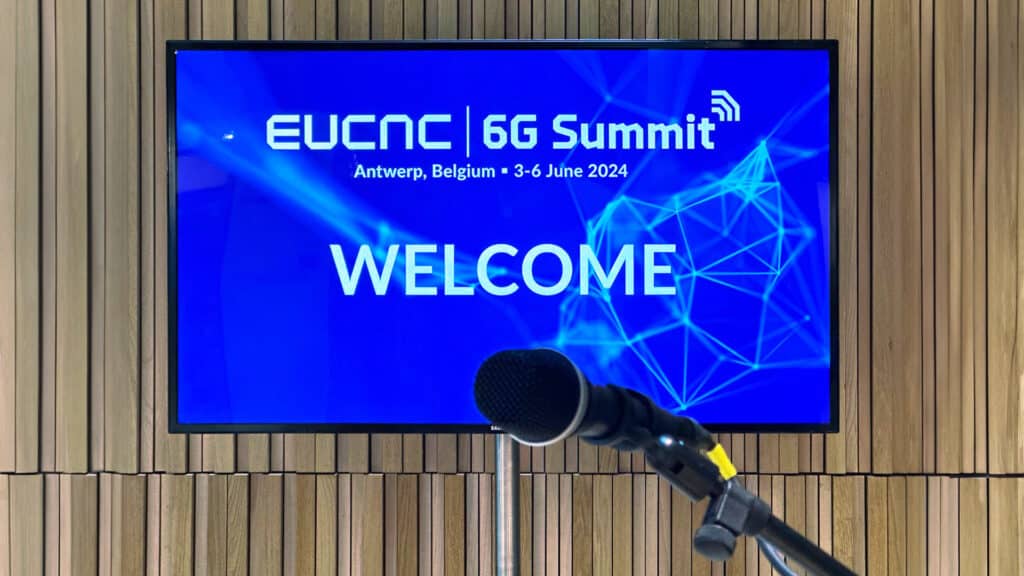
Throughout the conference, special sessions and convened sessions addressed specific technological challenges and opportunities, fostering collaboration among researchers, industry experts, and policymakers. This diverse content ensured that participants gained valuable insights into the latest developments and future directions in 6G technology and its applications.
Johann Marquez-Barja reminded the event participants that they, as the many talented professionals in the field, are the ones who make an event like this happen. The organisers thanked the audience for sharing and innovating together. Marquez-Barja concluded with a profound thank you to the conference sponsors: “This is a zero-profit conference. The sponsors are invaluable in enhancing this community.”